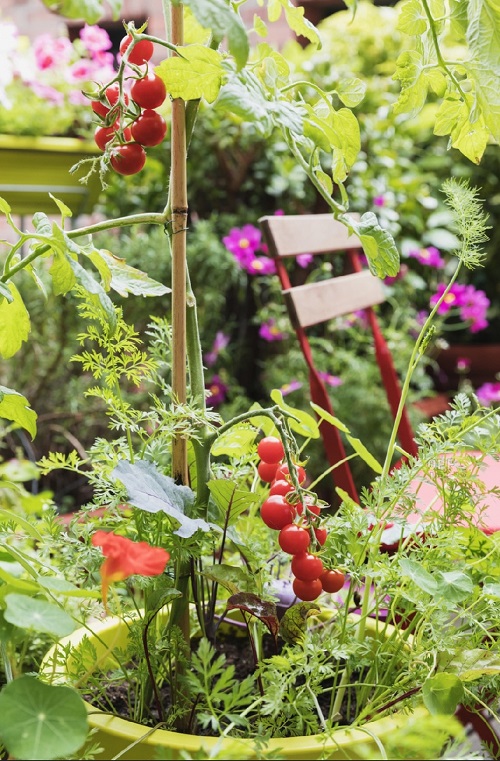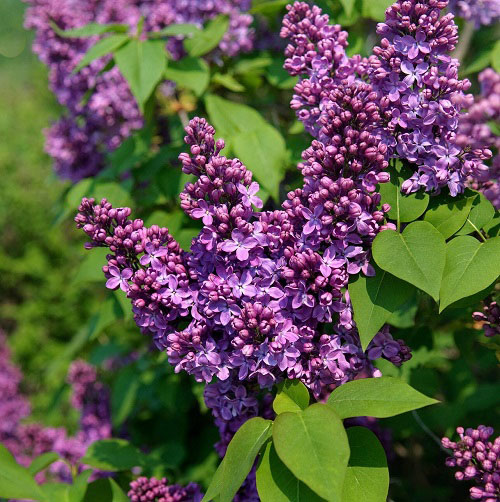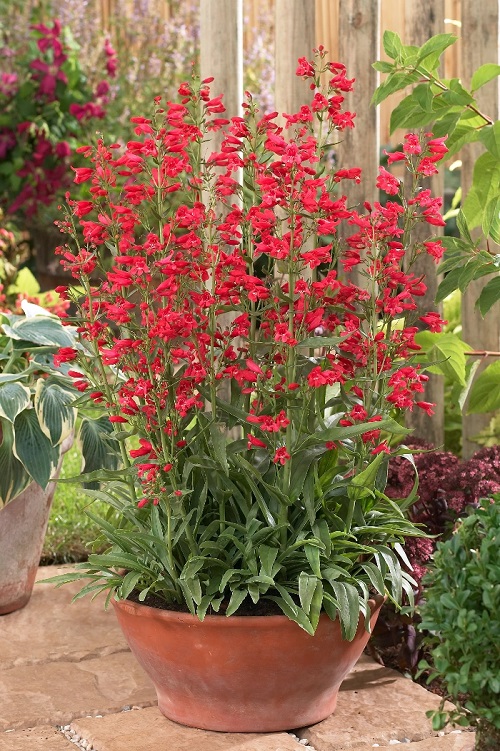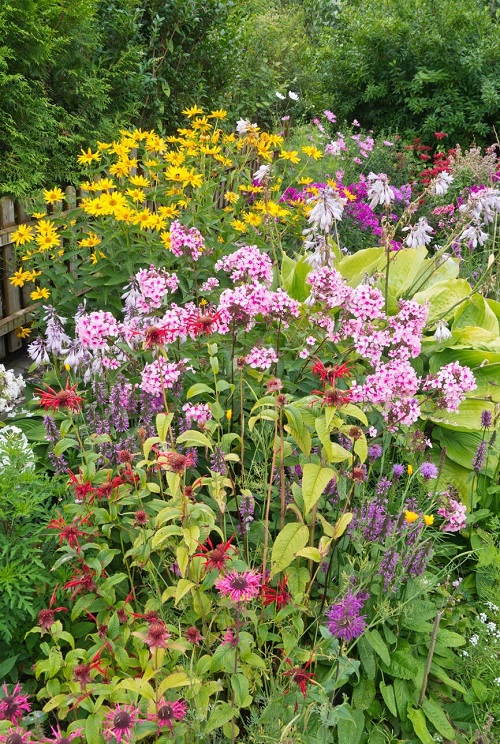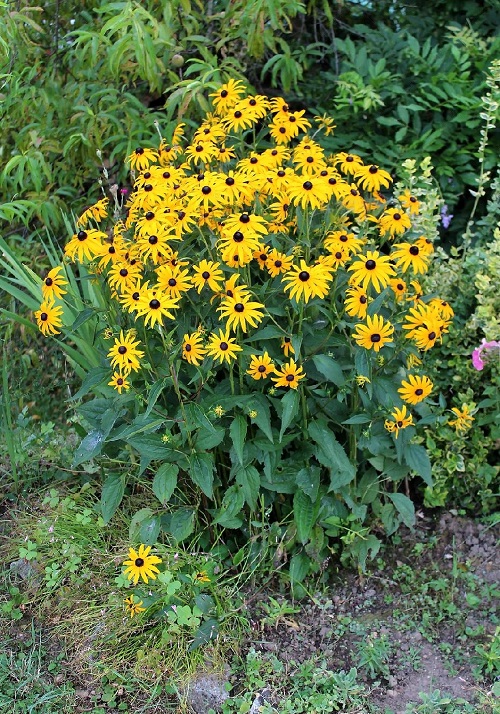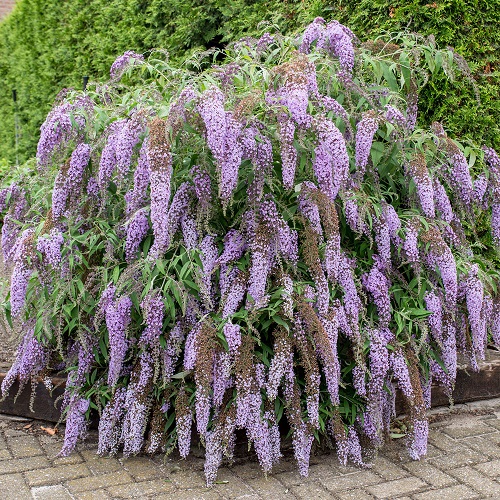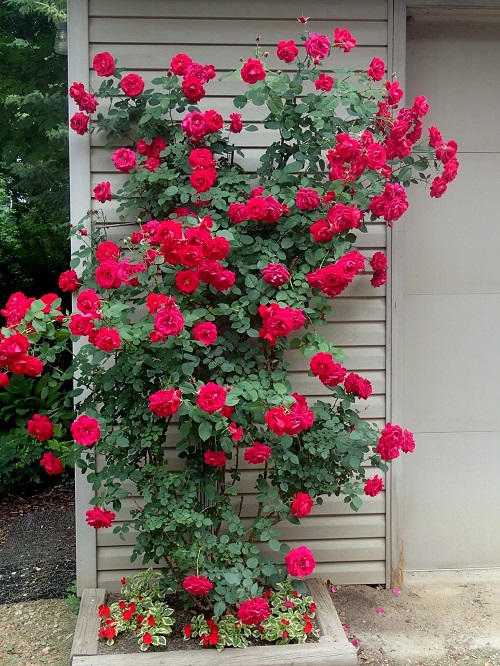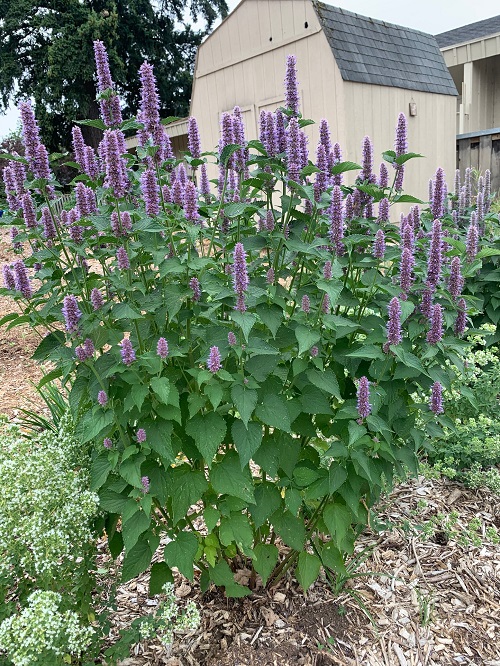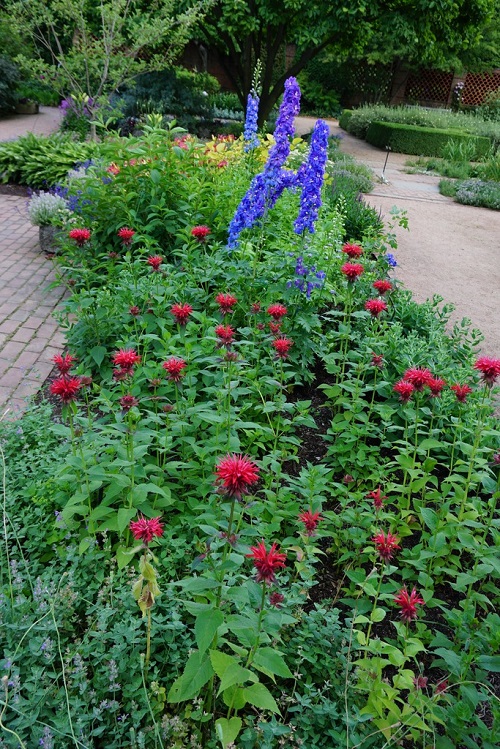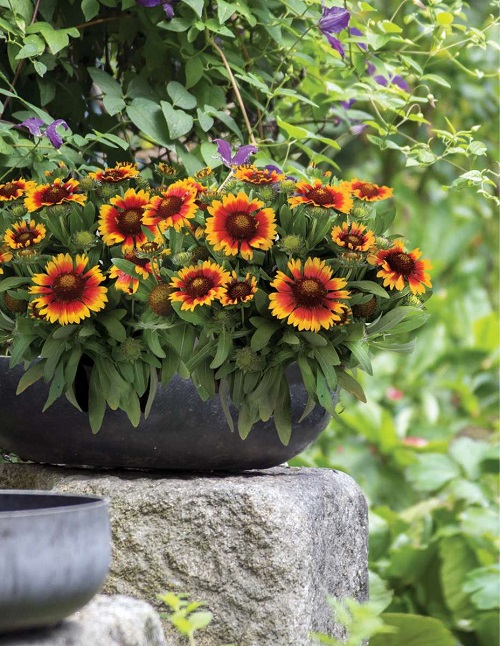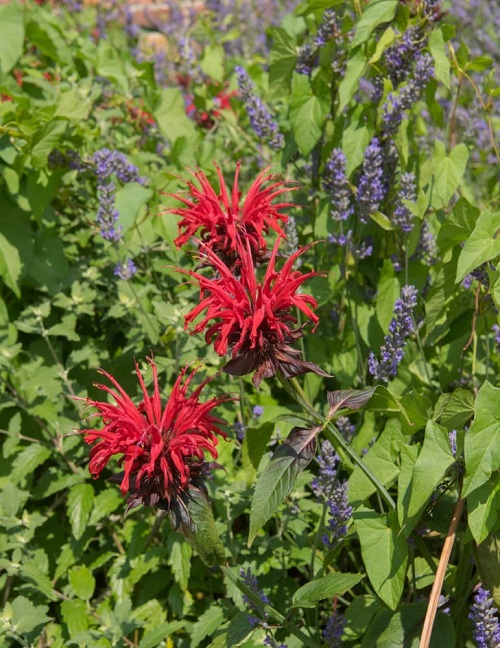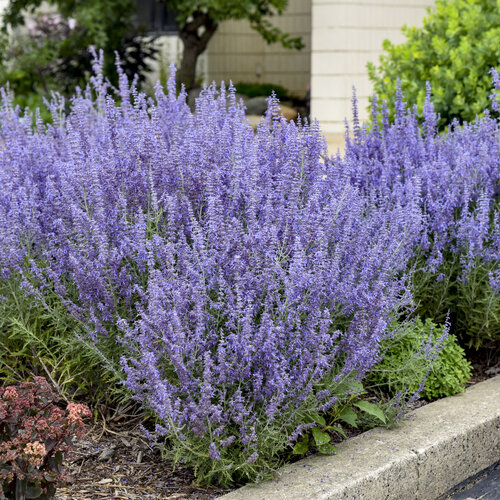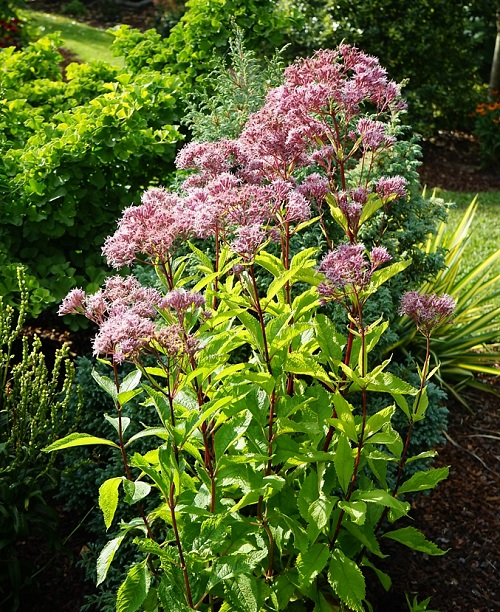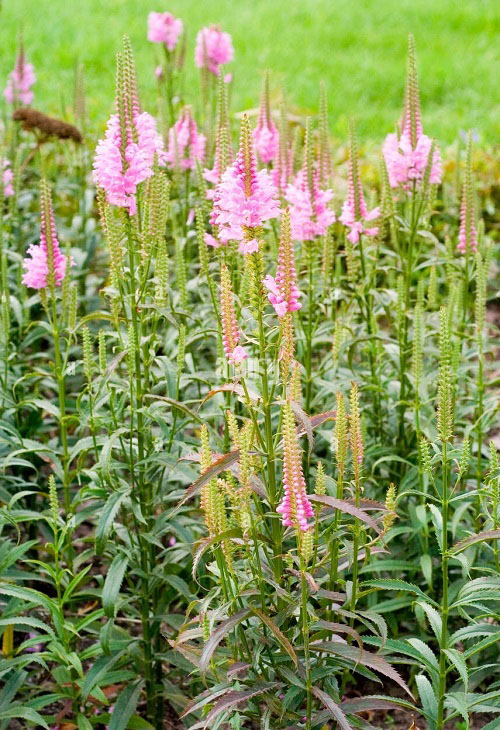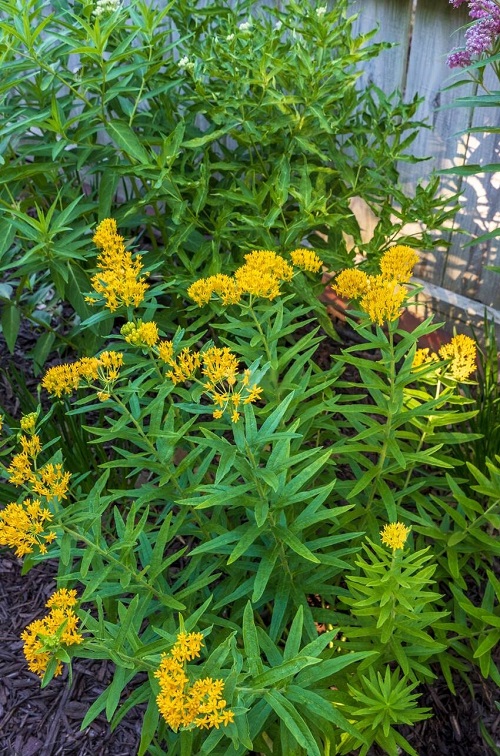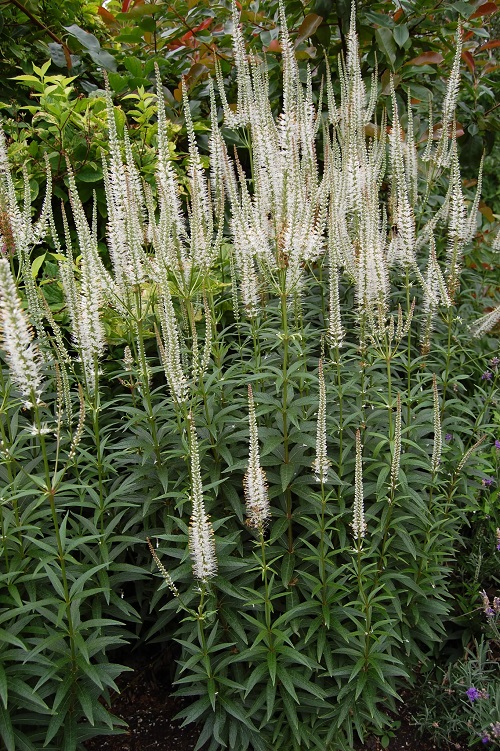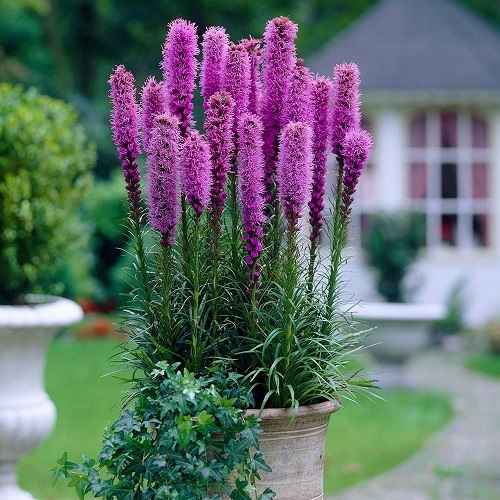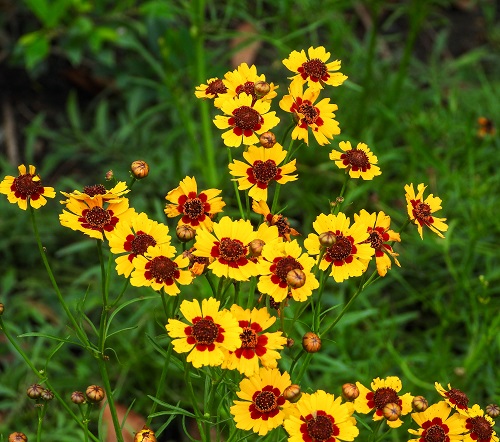Revitalize your garden with vibrant and pollinator-friendly Bee Balm and these perfect Bee Balm Companion Plants!
Are you tired of a lackluster garden with only a few blooms here and there? Well, it’s time to bring some buzz to your backyard with these Bee Balm Companion Plants! These vibrant and fragrant beauties not only attract pollinators but also complement each other in color, height, and texture, creating a visually stunning display.
Learn How to Grow Bee Balm here
Bee Balm Companion Plants
1. Tomato
Botanical Name: Solanum lycopersicum
Perfect for a garden-to-table experience, juicy tomatoes and Bee Balm make a dynamic duo, bringing vibrant color and mouth-watering flavor to your summer dishes.
Check out the Tastiest Tomato Varieties here
2. Peony 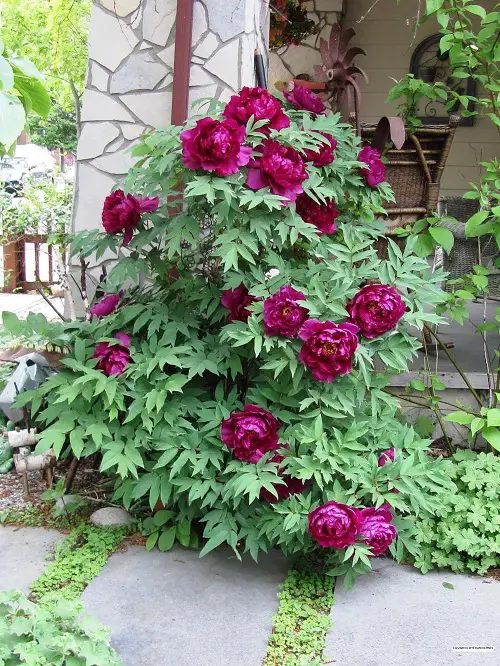
Botanical Name: Paeonia
This bee balm companion plant shares similar sun and water requirements and their stunning colors and fragrances blend perfectly, creating an enchanting and romantic atmosphere.
Look at the Best Yellow Peony Varieties here
3. Echinacea
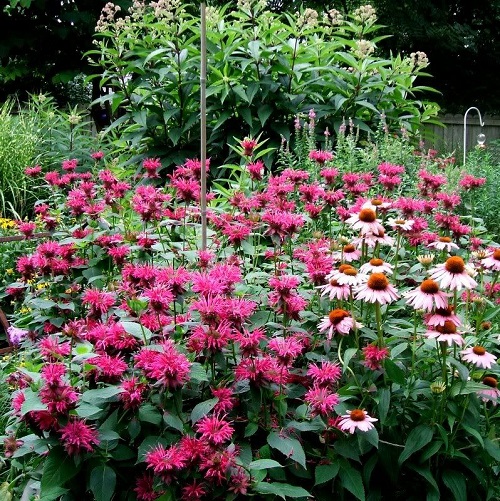
Botanical Name: Echinacea purpurea
For a garden that’s both beautiful and functional, pair Bee Balm with Echinacea. Not only do they attract pollinators, but they also have medicinal properties, making them a winning combination in any garden.
4. Lilac
Botanical Name: Syringa vulgaris
This bee balm companion plant complements the other perfectly with its pastel hues, creating an eye-catching display in any garden.
5. Penstemon
Botanical Name: Penstemon
For a harmonious garden, pair Bee Balm with Penstemon. Their complementary colors and long-lasting blooms make them a match made in heaven, attracting bees and butterflies throughout the season.
6. Phlox
Botanical Name: Phlox paniculata
If you want to create a garden that looks like a painting, combine the vibrant colors of Phlox and Bee Balm. This bee balm companion plant creates an eye-catching and colorful display in any garden.
7. Coral Bells
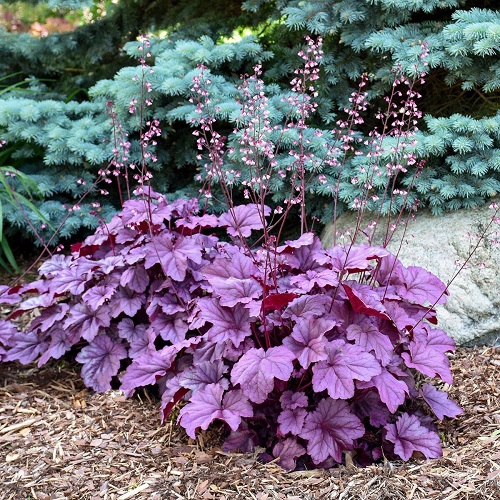
Botanical Name: Heuchera
For a sophisticated and stylish garden, combine the delicate blooms of Coral Bells with the striking colors of Bee Balm. These two plants complement each other perfectly, creating an elegant and colorful display that will be the envy of your neighborhood.
8. Coreopsis
Botanical Name: Coreopsis
This beautiful and hardy perennial produces bright yellow or golden flowers that bloom throughout the summer, providing a reliable source of nectar for bees, butterflies, and other pollinators.
9. Black-eyed Susan
Botanical Name: Rudbeckia hirta
Pair Bee Balm with Black-eyed Susan for a lively and cheerful garden display. This bee balm companion plant has a similar growth habit and complements color, creating an explosion of orange and pink hues that are sure to brighten up your day.
10. Squash

Botanical Name: Cucurbita
Pair Bee Balm with Squash to attract pollinators and ensure a bountiful harvest. Bee Balm’s bright colors and sweet nectar attract bees and butterflies, while Squash’s large leaves provide ample shade and moisture retention for the plants to thrive.
11. Buddleia
Botanical Name: Buddleja davidii
A perfect pair for a butterfly garden, Buddleia and Bee Balm attract an abundance of butterflies, bees, and hummingbirds with their sweet fragrance and bright colors, creating a lively and enchanting display in any garden.
12. Rose
Botanical Name: Rosa
Add a touch of romance to your garden with this bee balm companion plant. These two flowers complement each other in color and fragrance, creating a stunning and enchanting display that’s sure to impress.
How Long Do Roses Last? Learn here
13. Agastache
Botanical Name: Agastache foeniculum
If you’re looking for a low-maintenance garden, this bee balm companion plant is a great choice. These two plants share similar sun and water requirements and complement each other in color, creating a beautiful and drought-tolerant garden display.
14. Asters
Botanical Name: Aster
For a fall garden display that’s full of color and life, combine the vibrant blooms of Asters with the striking colors of Bee Balm. These two flowers complement each other perfectly, creating an eye-catching and colorful display.
15. Yarrow
Botanical Name: Achillea millefolium
For a garden that’s both beautiful and medicinal, pair Bee Balm with Yarrow. These two plants are both known for their medicinal properties and complement each other in color and texture, creating a beautiful and functional garden display.
16. Salvia
Botanical Name: Salvia
For a striking and colorful garden display, pair Bee Balm with Salvia. These two flowers complement each other in color and fragrance, creating an eye-catching and enchanting display that will be the envy of your neighborhood.
17. Rudbeckia
Botanical Name: Rudbeckia Cherokee Sunset
With its bright, cheerful flowers, this bee balm companion plant matches it, attracting pollinators and adding a pop of color to your garden.
18. Butterfly Weed
Botanical Name: Asclepias tuberosa
As the name suggests, Butterfly Weed is a magnet for butterflies, attracting them with its bright orange flowers. When planted with Bee Balm, they create a vibrant and pollinator-friendly garden.
19. Gaillardia
Botanical Name: Gaillardia
Gaillardias are often called blanket flowers because of their colorful and daisy-like blooms. They attract bees and butterflies, and when paired with Bee Balm, they make a stunning combination in any garden.
20. Zinnias
Botanical Name: Zinnias
With their bright colors and long blooming period, Zinnias are a popular choice for any garden. This bee balm companion plant attracts butterflies and hummingbirds.
21. Lavender
Botanical Name: Lavandula
Lavender not only attracts pollinators but also helps to repel pests like mosquitos and moths. Plus, the combination of their fragrances creates a pleasant and calming aroma in your garden.
Learn about the Best Lavender Varieties here
22. Catmint
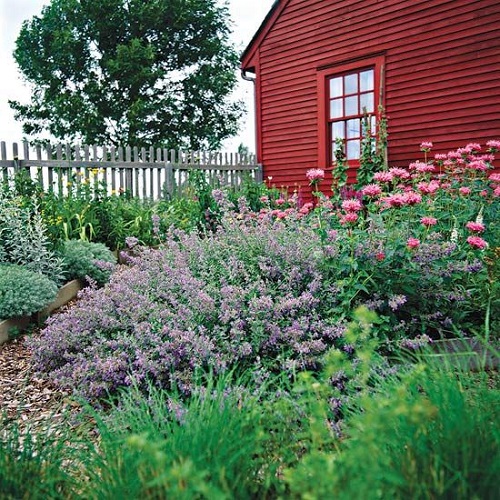
Botanical Name: Nepeta
Catmint is a low-maintenance, hardy perennial that attracts bees, butterflies, and hummingbirds to your garden. When paired with Bee Balm, they create a visually appealing and beneficial partnership.
23. Russian Sage
Botanical Name: Perovskia atriplicifolia
This bee balm companion plant is drought-tolerant that attracts bees and butterflies. When planted alongside bee balm, they make a stunning contrast in colors and textures, making them one of the best Bee Balm Companion Plants.
Find the Best Types of Sage here
24. Joe Pye Weed
Botanical Name: Eutrochium
Joe Pye Weed is a tall and elegant perennial that attracts a variety of pollinators, including bees and butterflies. Its delicate pink flowers create a beautiful contrast when paired with Bee Balm.
25. Obedient Plant
Botanical Name: Physostegia virginiana
Obedient Plant is a unique and quirky bee balm companion plant that adds interest and texture to your garden. It attracts bees and hummingbirds and, when planted with bee balm, creates a playful and dynamic combination.
26. Milkweed
Botanical Name: Asclepias
Milkweed is an essential plant for any pollinator-friendly garden, attracting monarch butterflies and providing a vital food source for their caterpillars. When paired with Bee Balm, they create a thriving and diverse ecosystem in your garden.
27. Culver’s Root
Botanical Name: Veronicastrum virginicum
Culver’s Root is a tall and elegant plant with delicate white flowers that attract bees and butterflies. When planted with Bee Balm, they create a serene and visually appealing combination.
28. Goldenrod
Botanical Name: Solidago
Goldenrod is a stunning bee balm companion plant that attracts a variety of pollinators, including bees, butterflies, and hummingbirds. These plants together create a cheerful and sunny garden.
29. Sneezeweed
Botanical Name: Helenium autumnale
Sneezeweed is another of the best Bee Balm Companion Plants, attracting bees and butterflies with its vibrant yellow flowers. When planted with Bee Balm, they create a lively and colorful garden.
30. Ironweed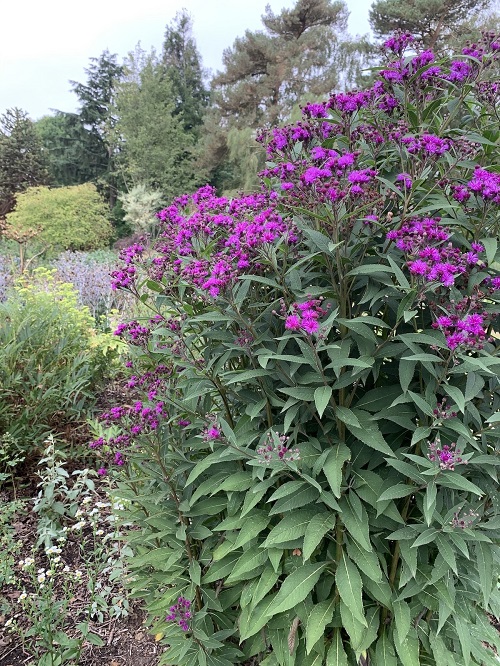
Botanical Name: Vernonia
Ironweed is a native perennial that attracts a wide variety of pollinators, including bees, butterflies, and hummingbirds. Its tall and striking purple flowers make a beautiful contrast when planted with Bee Balm.
31. Blue Mist Shrub
Botanical Name: Caryopteris x clandonensis
Blue Mist Shrub is a lovely and unique plant that attracts bees and butterflies with its fluffy, blue flowers. The silvery-gray foliage of the Blue Mist Shrub and the green, aromatic foliage of the Bee Balm creates an attractive contrast when planted together.
32. Blazing Star
Botanical Name: Liatris spicata
Blazing Star is a hardy and drought-tolerant plant that attracts a variety of pollinators, including bees and butterflies. Its spiky pink flowers create a striking contrast when paired with Bee Balm.
33. Tickseed
Botanical Name: Coreopsis tinctoria
Tickseed is a low-maintenance and reliable plant that attracts a variety of pollinators, including bees and butterflies. Its bright yellow flowers make a cheerful and sunny addition when planted with Bee Balm.


